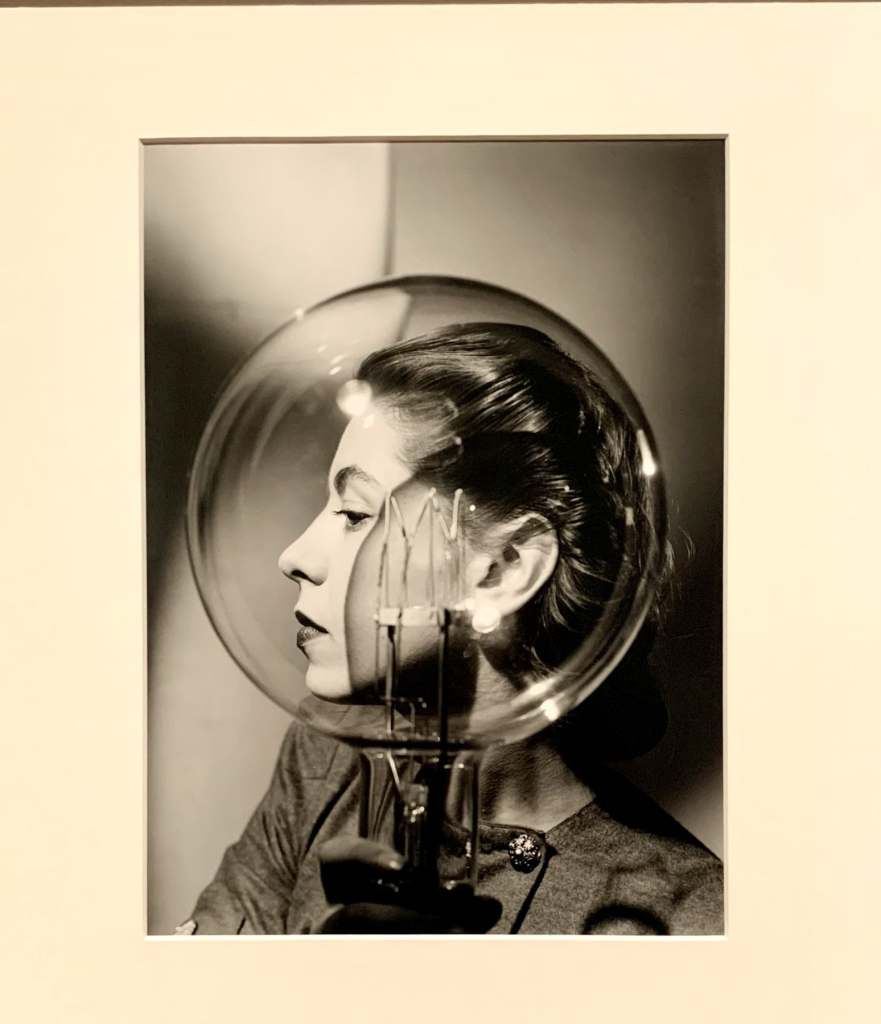This major exhibition of the trailblazing surrealist photographer Lee Miller is a hot ticket right now. Just looking ahead on the booking calendar there are numerous timeslots sold out. How often does that happen with a photographic exhibition?
Tate Britain have assembled a fantastically curated collection of Miller’s work covering all her major iterations from early experimental self-portraits (surely, she would have been an influencer in today’s world), modelling career, the Man Ray era, her tenure at Vogue then the WW2 and beyond. Although much solid work was achieved after the second world war, I feel that she was so traumatised after it that she lost a lot of that visual curiosity she once had.
After the photography years she retired to a house in Sussex where she entertained an illustrious roster from the arts world while engaging in her new hobbies, cooking and kitchen gadgets.
Lee Miller at Tate Britain
This exhibition is vast, the largest the UK has seen and has some absolute gems within its realm.

From New York, Cario, Paris, London and the war years some 250 prints, contact prints both vintage and modern the visitor can really grasp in depth the creative mind Miller had. I often wonder what she would have been like as a film maker. I feel she would have created pure gold.
It’s with nature and particularly people that Miller connects with the best. There are plenty of landscape and architectural examples of her work on show but for me they don’t resonate with the same tone. The famous shots are here to admire and be reminded of what made her so extraordinary, female welders, man swathed in bandages and of course the Hitler’s Munich apartment shot with her in his bath, a carefully placed portrait of Hitler to one side and her boots on the floor, filthy with the rages of war. She was cleansing herself from it all but alas this didn’t work.
Lee Miller
Her later years were often spent in denial (she even claimed to her son that all her negatives were destroyed) only to be found after her death in 1979 in the attic of her Sussex home. As she got older alcohol played a large part in her life, blotting out the terrors of the sights she had witnessed. One of the ten rooms in the exhibition is dedicated to just those horrors, concentration camp victims and dead bodies, dead German soldiers floating in rivers and a look of petrification on the faces of two concentration camp guards caught trying to escape wearing civilian clothes. None of these were published in her lifetime.
 There are even a few examples of her experimentation in colour, I would have liked to have seen more from the Man Ray era as this in many ways is what made here the resilient probing innovative photographer she became. Always looking for compassion in a violent and changing world.
There are even a few examples of her experimentation in colour, I would have liked to have seen more from the Man Ray era as this in many ways is what made here the resilient probing innovative photographer she became. Always looking for compassion in a violent and changing world.
I urge you to see this exhibition not only for the beauty (and cruelty in some cases) of the world in which she lived, but as a testament to history. As another famous war photographer has recently stated, ‘We have learned nothing’ – somewhere at any one time there will always be human conflict.
Lee Miller at Tate Britain runs until 15 February 2026, (10am to 6pm) you will have to book online for tickets £20, via the Tate Britain website.